Mediterranean Climate Zone
The name Mediterranean is a specific geographic part of the World. However, the term “Mediterranean Climate Zone” refers to a number of different geographic areas, all of which have a similar dry summer climate. Whilst their soils may vary, they all endure long summer months and cooler, wetter winters. These Mediterranean Climate Zones are located around the World mainly between 30° and 45° as shown above. There are some notable exceptions outside of this range that enjoy a similar climate, such as Okanagan in British Columbia, Canada, which lies at 50° North.
One of the core aims of our member organisations is to share their knowledge and experience of mediterranean gardening. For their own members, this is about how it applies to their own specific part of the world. Whilst each association has local considerations they need to take into account, there are MANY common principles and plants that are appropriate for all Mediterranean Climate Zones.
MGi exists to support this free movement of information and experience, both between our societies and the wider public.
Please feel free to explore both the MGi website and those of our societies, each of which provide access to a wealth of information for those who are interested.
For more detailed information about the Mediterranean Climate, look at the Wikipedia entry by clicking here.
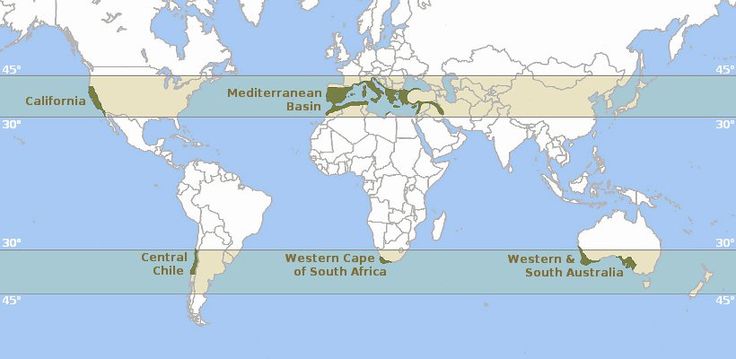
What is Mediterranean gardening?
An extract from Olivier Filippi’s book The Dry Gardening Handbook (details below)
February
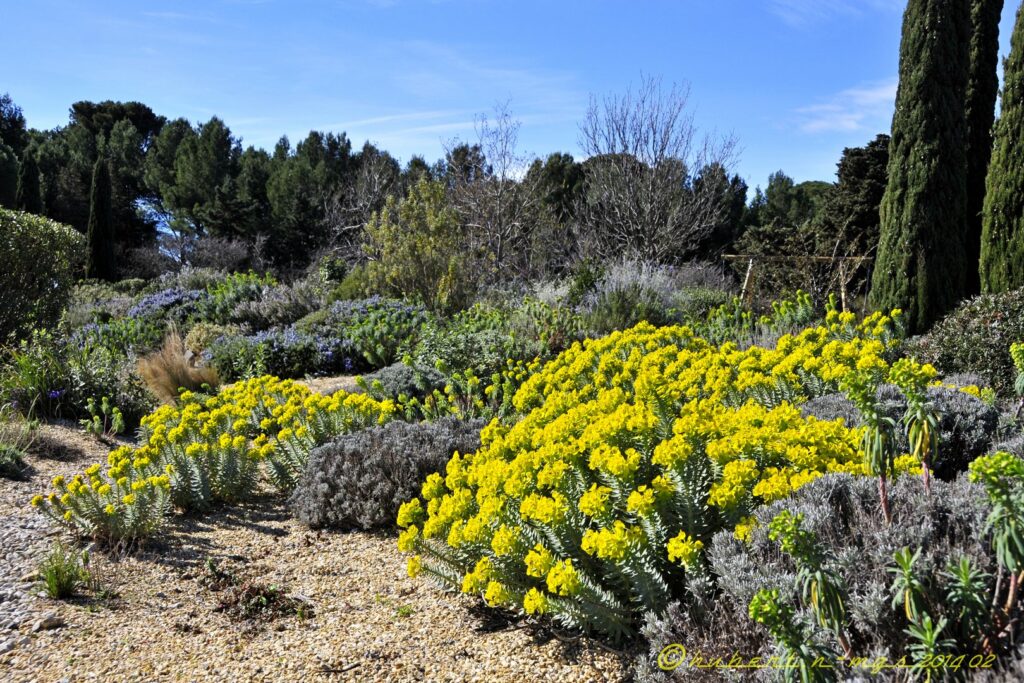
Euphorbia rigida in flower
Drought has always been considered as a limitation for gardens. We have all been influenced by the temperate climate garden model, in which thriving shrubs and lush perennials surround a perfect lawn. Every month, gardening magazines make us dream of superb gardens, generally in northern Europe. Beautiful photographs in gardening books promote an image of rustic scenes, where roses and clematis grow intertwined. Yet in areas with a Mediterranean climate these ideal conditions are a dream that can never be fulfilled. Instead of gentle light we have brutal sunshine; instead of rich soil we have the stony dry soil. The drier the climate, the harder it seems to make a garden. It is as if we are engaged in a ceaseless battle against a hostile environment.
May
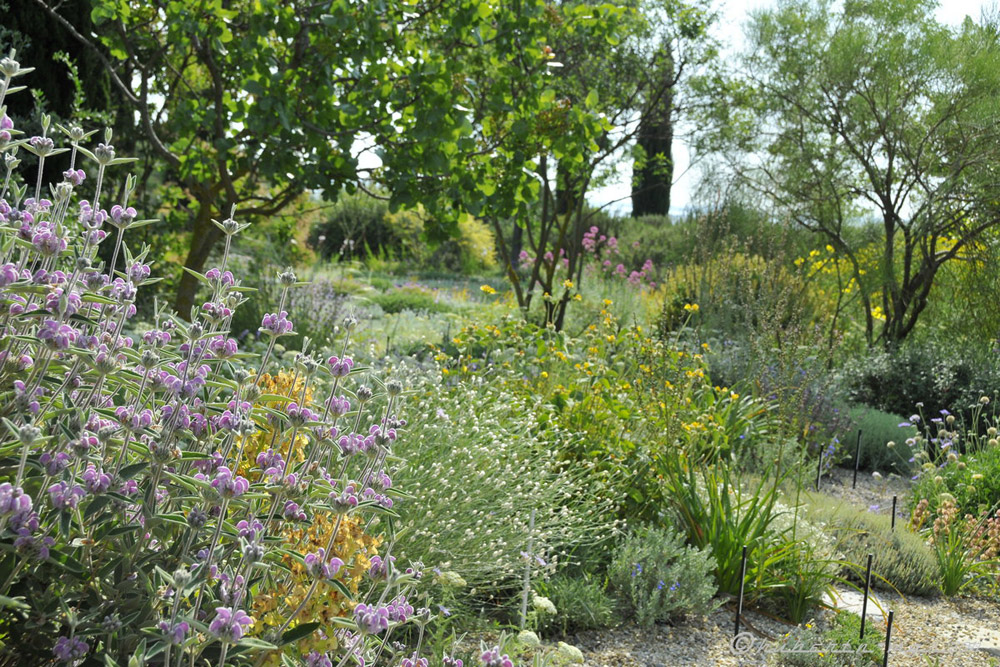
Phlomis purpurea in the foreground
Nevertheless, dry climates offer extraordinary gardening possibilities. Paradoxically, thanks to a long tradition of a passion for gardening and botanical research, it is in England that the largest collections of drought-resistant plants have been amassed. These plants are jealously cared for as if they were precious rarities, grown in raised rock gardens to ensure perfect drainage and sometimes cultivated under glass to protect them from an excess of winter wet. Garden-lovers flock to the Royal Horticultural Society’s famous garden at Wisley, south of London, to admire a sophisticated rock garden re-created under glass. Its treasures include plants that often no one bothers even to glance at on our Mediterranean roadsides – Rhodanthemum from Morocco, Erodium from Greece or Sideritis from Turkey. While English plantsmen pride themselves on their collections of plants for dry conditions, gardeners further south are desperately watering their lawns, but achieve nothing more than a mediocre imitation of an English garden.
June
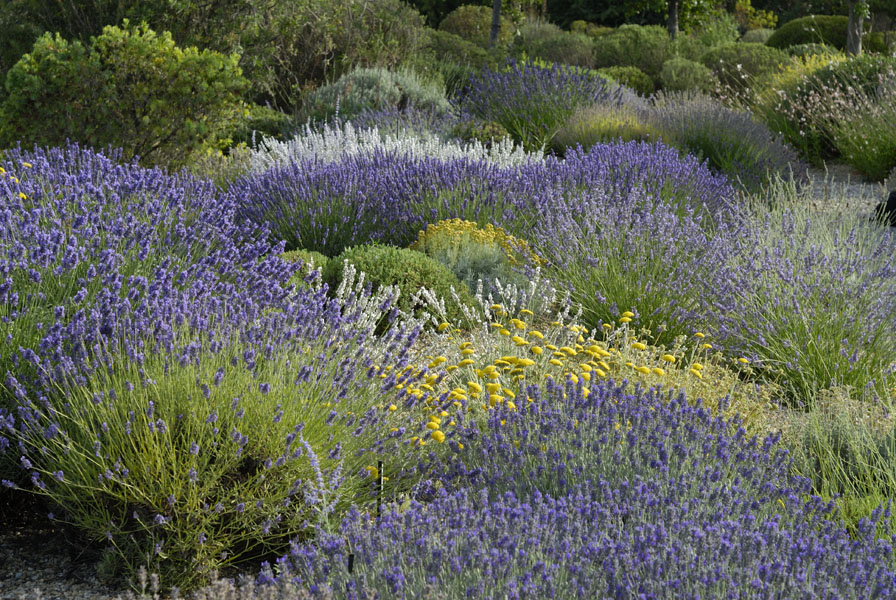
Many varieties of lavender in flower
Rather than drought, it is often the misguided use of irrigation that limits the range of plants in Mediterranean gardens. Many dry-climate plants are in fact easy to grow if we respect the conditions of their native habitat, but become extremely capricious as soon as we try to water them in summer. The cistuses of the garrigue, the ceanothuses that cover the hillsides of California or the capers that billow down Sicilian cliffs quite simply cannot tolerate the combination of heat and moisture. Irrigation during our blazing summers generally proves fatal to them.
October
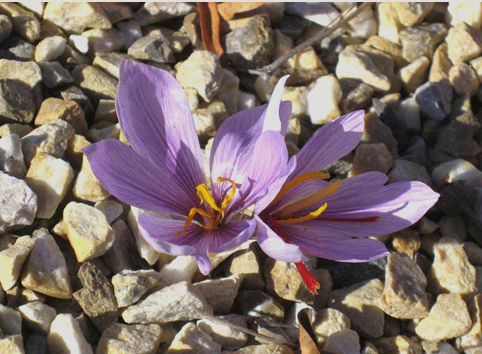
Crocus sativus
If you water your garden during the hot weather you will never be able to grow the full range of plants adapted to the Mediterranean climate. The beautiful Salvia candelabrum will be nothing more than a fantasy, the magnificent Fremontodendron covered in golden flowers won’t stand a chance. Don’t bother even to dream of the vibrant blue of Lithodora fruticosa or of the soft, silky pink flowers of Ebenus cretica: irrigation will kill them just as surely as a powerful dose of herbicide. Automatic watering systems are one of the worst inventions of the modern Mediterranean gardener. You may think you are making life easier while in fact all you’re doing is limiting the range of plants that can survive in your garden. Without realizing it, you are helping to reduce the plant palette to uniformity. In region after region, gardens end up all looking much the same, having lost the individual identity that is linked to their particular climate and soil conditions.
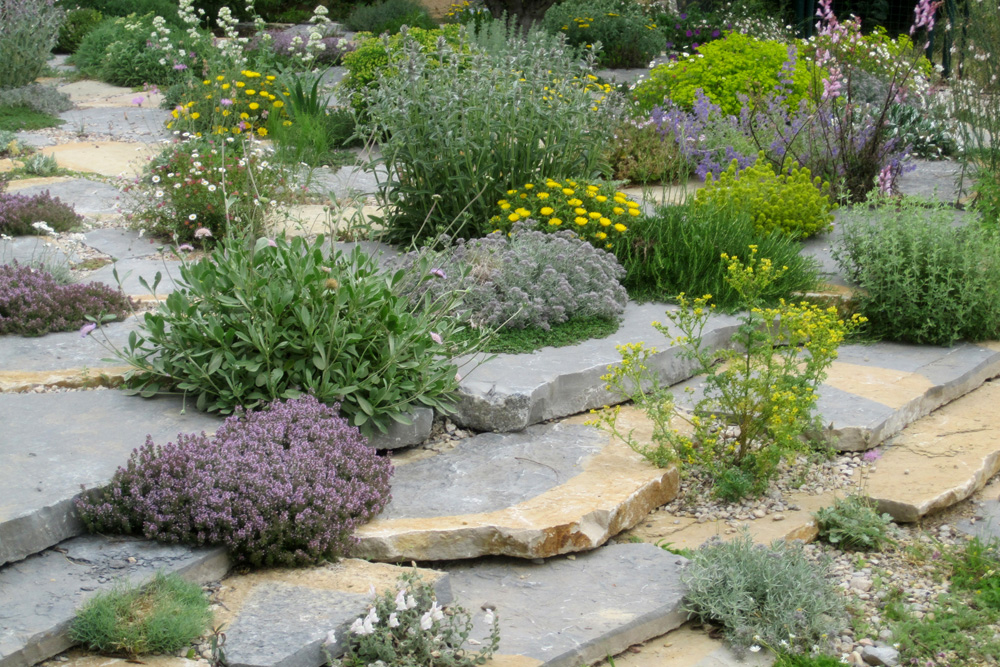
Terrasse végétale
What will happen if you stop watering? Well, yes, the plants that need water will die, one after another. So what will be left? Everyone dreads the idea of a miserable-looking garden, where dusty borders contain only a few spiny plants, and wretched shrubs eke out a meagre existence. We feel instinctively that water brings luxuriance and variety, and that dryness restricts our gardening possibilities. Yet exactly the opposite is true. Most gardeners are unaware that the natural flora of Mediterranean-climate regions is a lot richer than that of temperate regions.
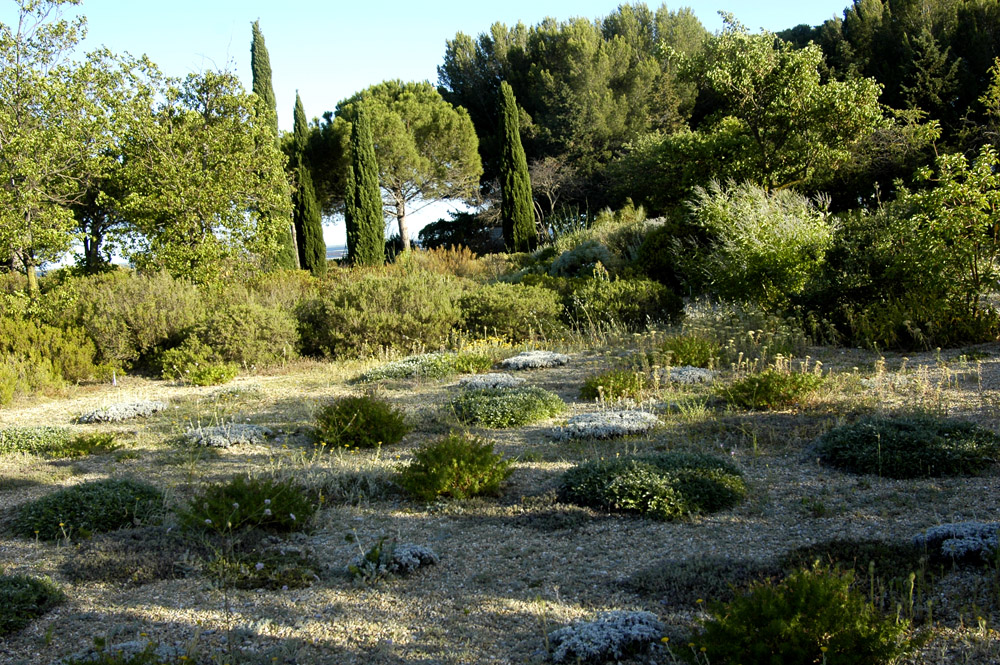
The ‘steppe’ garden
The photographs on this page are of Olivier and Clara Filippi’s garden in the Hérault département of France
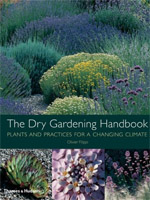
The Dry Gardening Handbook : Thames & Hudson 2008
Two sections, the first dedicated to background information on plants and drought, the second a comprehensive A-Z listing of 500 perennials, shrubs and climbers. A fantastic source of ideas and inspiration for the dry garden.
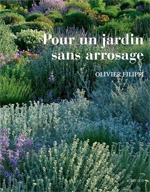
Pour un jardin sans arrosage: Actes Sud 2007 et 2008
Comment créer un jardin sans arrosage? Quelles plantes choisir, et comment font-elles pour survivre à la sécheresse? Quelles sont les techniques à mettre en oeuvre pour la préparation du sol, la plantation et l’arrosage. Ce livre apporte des réponses concrètes et précises, basées sur une expérience de près de vingt ans de travail quotidien avec les plantes pour jardin sec.

